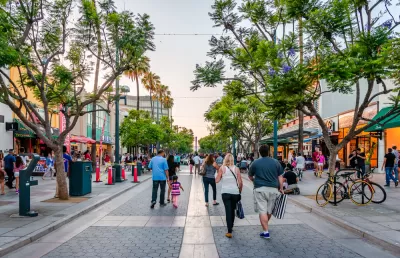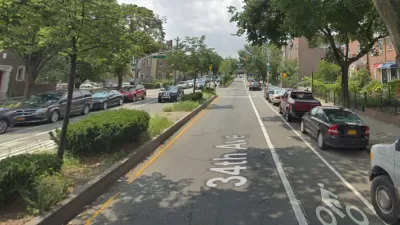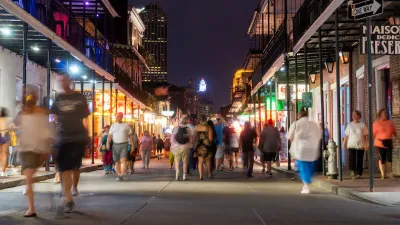The growth of pedestrianized spaces and car-free streets depends on a transformational shift in thinking about what—and who—public spaces and streets are for.

The fierce debate over how to use public space continues as cities weigh the future of the ‘open streets’ initiatives that gained popularity during the pandemic. Reis Thebault outlines the ongoing issue in The Washington Post.
Over the last year alone, major U.S. cities doubled-down on plans to restrict driving on main streets. Municipalities from Michigan to Washington, D.C., banned right turns at red lights. Voters earmarked billions for public transit projects. Officials unveiled hundreds of miles of new bike lanes. New York City proposed a new tax on motorists, and California relaxed jaywalking restrictions and freed up land once reserved for parking spaces.
These nationwide actions signal a shift in how we view public space, which has for decades been largely devoted to accommodating cars and driving. Change hasn’t come without controversy, but car-free streets are gaining widespread public support and momentum.
The article points to the heated fight over car access to San Francisco’s JFK Promenade (nee JFK Drive), a 1.5-mile stretch of road in Golden Gate Park. Last November, “More than 60 percent of voters approved a measure permanently banning cars from part of JFK Drive, while a similar number rejected a competing initiative that would have allowed cars to return to stretches of Golden Gate Park and the Great Highway, another popular city roadway that was partially closed at the onset of the pandemic.”
FULL STORY: Inside the movement to remake America’s city streets

Alabama: Trump Terminates Settlements for Black Communities Harmed By Raw Sewage
Trump deemed the landmark civil rights agreement “illegal DEI and environmental justice policy.”

Planetizen Federal Action Tracker
A weekly monitor of how Trump’s orders and actions are impacting planners and planning in America.

The 120 Year Old Tiny Home Villages That Sheltered San Francisco’s Earthquake Refugees
More than a century ago, San Francisco mobilized to house thousands of residents displaced by the 1906 earthquake. Could their strategy offer a model for the present?

Ken Jennings Launches Transit Web Series
The Jeopardy champ wants you to ride public transit.

BLM To Rescind Public Lands Rule
The change will downgrade conservation, once again putting federal land at risk for mining and other extractive uses.

Indy Neighborhood Group Builds Temporary Multi-Use Path
Community members, aided in part by funding from the city, repurposed a vehicle lane to create a protected bike and pedestrian path for the summer season.
Urban Design for Planners 1: Software Tools
This six-course series explores essential urban design concepts using open source software and equips planners with the tools they need to participate fully in the urban design process.
Planning for Universal Design
Learn the tools for implementing Universal Design in planning regulations.
Clanton & Associates, Inc.
Jessamine County Fiscal Court
Institute for Housing and Urban Development Studies (IHS)
City of Grandview
Harvard GSD Executive Education
Toledo-Lucas County Plan Commissions
Salt Lake City
NYU Wagner Graduate School of Public Service





























